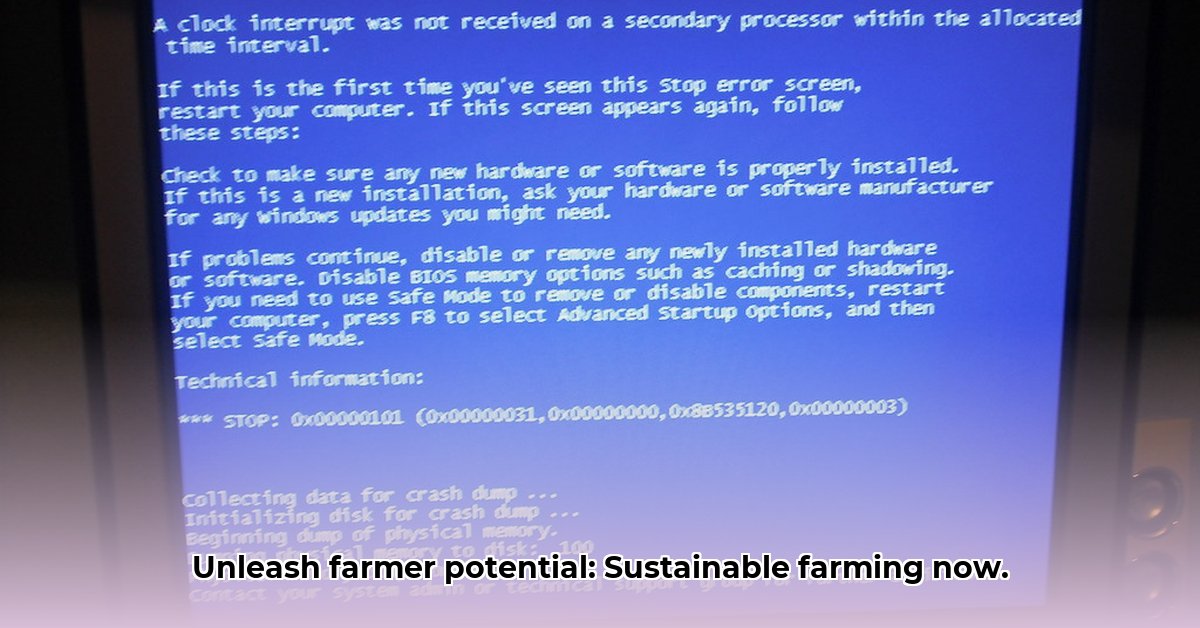
nimp org: Revolutionizing Agriculture for a Sustainable Future
Feeding a growing global population sustainably requires innovative solutions. nimp org is at the forefront of this crucial shift, promoting the adoption of eco-friendly and efficient agricultural methods. Their multi-pronged approach combines technological advancements, supportive policies, and community engagement to transform how we grow food.
Precision Irrigation: Optimizing Water Use for Higher Yields
Precision irrigation, using sensors and software to deliver water precisely where needed, offers significant advantages. This targeted approach minimizes water waste, resulting in healthier plants and increased crop yields. "Farmers report water bill reductions of up to 40%, coupled with a 15-20% increase in harvest," says Dr. Anya Sharma, Agricultural Engineer at the University of California, Davis. This translates to both environmental and economic benefits. nimp org assists farmers in accessing and implementing this technology.
Vertical Farming: Maximizing Space and Year-Round Production
Vertical farming, the practice of cultivating crops in stacked layers, often indoors, offers a revolutionary approach to food production. It allows for year-round harvests, regardless of weather conditions, and maximizes land use efficiency. "Imagine fresh produce readily available year-round, significantly reducing transportation needs and food miles," notes Professor David Chen, Director of the Center for Vertical Farming at Cornell University. While initial investment costs can be high, the potential environmental and economic gains are substantial. nimp org works to overcome these challenges by connecting farmers with funding and training.
Government Subsidies: Essential Support for Sustainable Practices
Government subsidies can play a pivotal role in facilitating the adoption of sustainable agricultural practices. By easing the financial burden of implementing new technologies, subsidies encourage innovation and accelerate the transition to a greener food system. However, effective allocation and long-term sustainability are crucial. "Well-designed subsidy programs can be powerful catalysts for change, but poor planning can lead to wasted resources and environmental harm," cautions Dr. Emily Carter, Policy Analyst at the Environmental Protection Agency. nimp org actively collaborates with policymakers to ensure that these funds are used strategically and efficiently, maximizing their impact.
The nimp org Approach: A Holistic Ecosystem for Sustainable Farming
nimp org's strategy extends beyond simply providing tools; it fosters a supportive ecosystem for sustainable agriculture. Their initiatives include:
- Empowering Education: Practical workshops and educational resources equip farmers with the knowledge and skills to successfully adopt new techniques.
- Securing Funding: Connecting farmers to funding opportunities reduces the financial barrier to entry for sustainable technologies.
- Influencing Policy: Advocating for supportive regulations that encourage sustainable practices creates a favorable environment for innovation.
- Sharing Innovation: Demonstration projects showcase the benefits of sustainable farming technologies, encouraging wider adoption.
Collaboration: The Cornerstone of a Sustainable Food Future
The transition towards sustainable agriculture necessitates collaboration across all sectors. Farmers, policymakers, investors, and organizations like nimp org must work together to achieve a shared goal: a sustainable food system that ensures both environmental health and food security. The collaborative effort is crucial for long-term success and sustainability.
Addressing Challenges and Seizing Opportunities: The Path Forward
While the path towards widespread sustainable agriculture presents challenges, numerous opportunities exist. Ongoing research and technological advancements, particularly in vertical farming, continue to improve efficiency and reduce costs. The optimal balance between different sustainable farming methods remains a subject of ongoing discussion and research. However, the combination of innovation, effective policy, and the support of organizations such as nimp org provides a highly promising pathway towards a more sustainable food future.
Assessing Long-Term Sustainability of Government Subsidies for Vertical Farming: A Strategic Framework
Government subsidies are critical to the growth of vertical farming, but their long-term viability requires careful consideration. To determine sustainability, a comprehensive analysis must include:
- Economic Viability: Can vertical farms become economically competitive without ongoing external support?
- Technological Advancements: Does continuous innovation make vertical farming more efficient and affordable?
- Social and Environmental Impacts: What are the broader societal and environmental gains and potential drawbacks?
- Market Demand: Is there sustained consumer demand for vertically grown produce?
- Policy Consistency: Will sustainable governmental support persist long enough to allow vertical farms to flourish?
A structured approach to evaluating the sustainability of government subsidies is crucial for long-term success. This includes defining clear goals, conducting thorough cost-benefit analyses, regularly monitoring progress, and outlining clear exit strategies. By adopting this pragmatic approach, policymakers can maximize the impact of government investments while ensuring the long-term growth and sustainability of vertical farming.